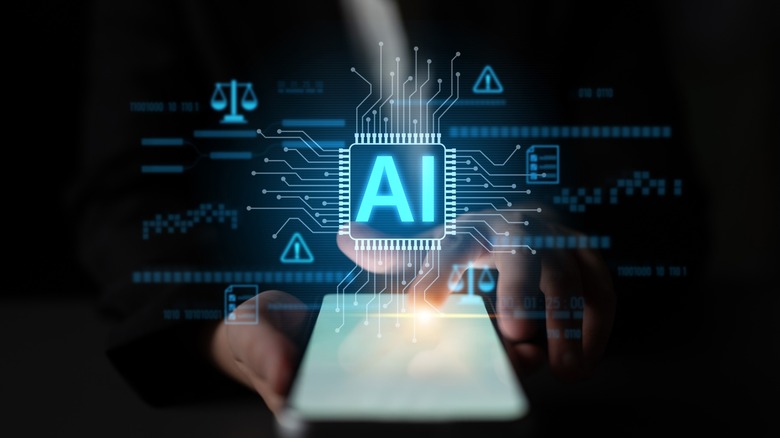This State Has Some Of America's Biggest AI Users (Here's What They're Doing With It)
Without a shadow of doubt, there is a global-scale AI boom. If you look at the state of things today, you'll see how machine learning's evolution is reshaping everything around us. The U.S. is not only experiencing this boom, but it's at the front and center of it. When you think of America's AI capitals, you probably picture California, New York, or Washington. But data from multiple reports show Virginia is also one of the biggest AI adopters in the country, consistently ranking among the top states.
A 2024 report from Superside measured interest by tracking AI-related searches per 10,000 people each month, as well as AI job postings. On that scale, Virginia ranked fifth overall, with more than 2,000 AI job openings and a high volume of searches relative to its population. Meanwhile, Anthropic's Economic Index study took a different angle by looking at how often its Claude model is used across states. That research placed Virginia squarely in the top tier of per-capita AI adoption, alongside states like California and New York. A third study from Virginia Works noted that per-capita AI usage in Virginia is higher than the national average, especially in business and education contexts.
These overlapping findings matter because each dataset captures a different part of the picture. Taken together, they explain why Virginia is seen as one of America's most AI-focused states. Virginia's combination of high adoption, concentrated infrastructure, and growing workforce demand has created an AI hotspot.
Why Virginia ranks high in AI usage
Several nations have embraced machine learning and are committed to making AI the future. In fact, the United States launched a $500 billion AI venture earlier this year. Virginia is making itself a big part of this with a data center capital that puts it firmly on the map. Virginia is home to Ashburn, which many call the Data Center Alley. The region hosts a massive concentration of server farms and hyperscale infrastructure. These, in turn, feed AI models and internet traffic.
Virginia also has a high per capita income, a strong tech workforce, and clusters of skilled professionals. It also has the electricity and infrastructure capacity to back it up. However, the rising demands of AI and data centers in the state have a downside. The data center infrastructure underpinning AI is energy-hungry, and reports show that the state's power demand is rising by 4% annually, although this figure also includes power used by manufacturing and other industries.
What Virginians are doing with AI
Now we know Virginia is punching above its weight in AI usage. So, how are people and organizations in the state actually using it? Anthropic's Claude breakdown shows that Virginians apply AI across a surprisingly broad range of uses, from academic research to writing and editing, and document cleanup. They also find use in software debugging, generating teaching resources, and even medical or psychological guidance. So, it's not just developers and tech bros. Anthropic ranks Virginia at 1.57 times what's expected for its working-age population, placing it behind Washington, D.C., which has 3.82 times the usage expected. Utah, California, and New York all have higher-than-expected AI usage as well.
It's important to note, though, that Claude represents only one slice of the AI landscape. OpenAI's ChatGPT, Google's Gemini, and Microsoft's Copilot dwarf Claude in overall adoption. Still, the trends visible in Anthropic's dataset offer a useful window. In the U.S. overall, Claude usage is shifting. While coding still dominates at about 36%, education has risen from 9.3% to 12.4%. It also shows growth in use for science tasks. Meanwhile, fully directive prompts have grown from 27% to 39% of use. This indicates where you hand over an entire task. Virginia's internal reports indicate that AI adoption among businesses accelerated more sharply in late 2024 compared to earlier periods. That suggests the state is overtaking slower adopters in workflow integration.


